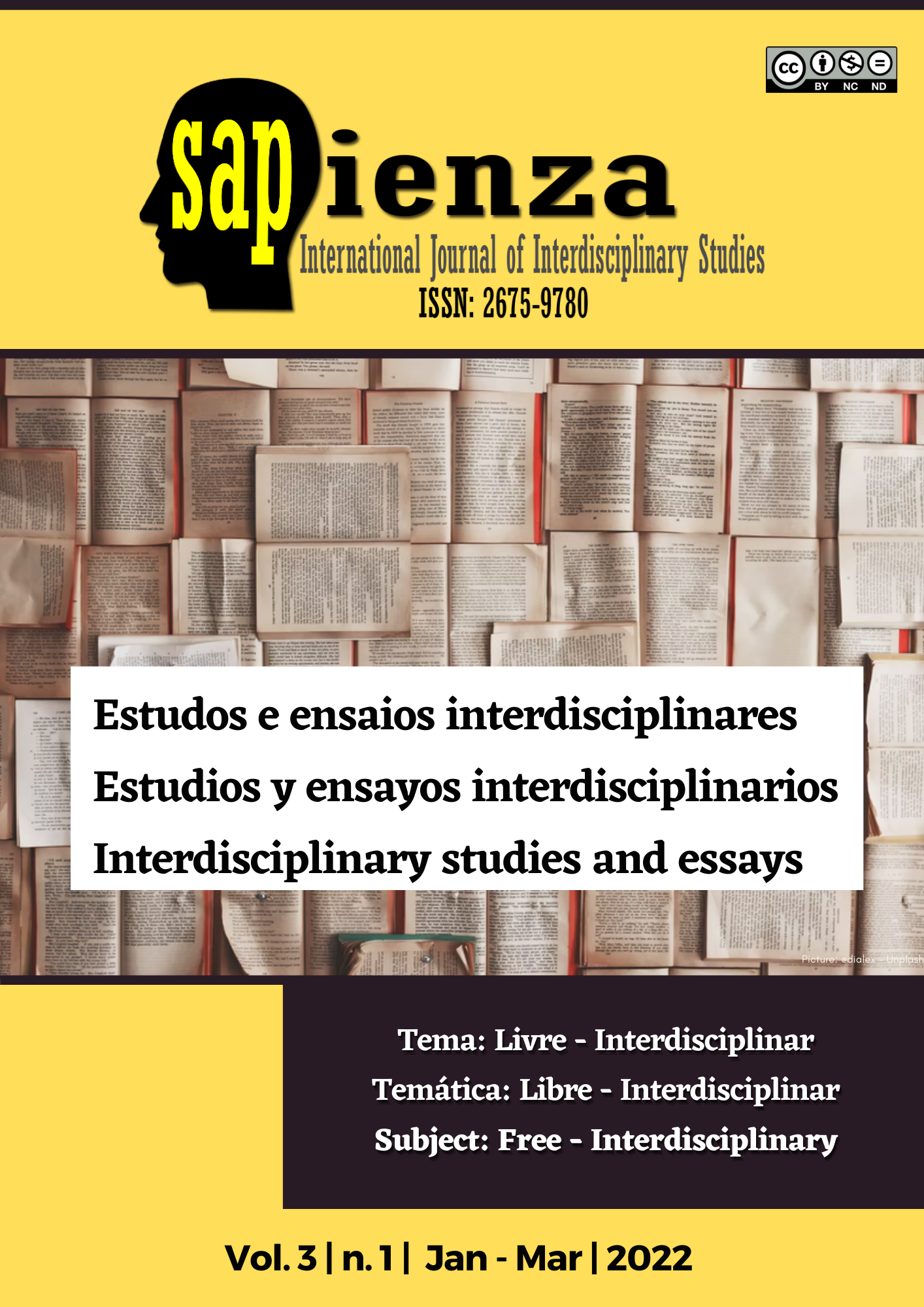Economic feasibility study for the installation of an air quality monitoring system based on a sensory network
DOI:
https://doi.org/10.51798/sijis.v3i1.282Keywords:
Economic viability, monitoring system, air quality, sensory networkAbstract
The present article allows to know the cost benefit and the causality of the implementation of a sensory network for air quality measurement. The implementation through the definition of the logical framework matrix, allows us to frame the objectives set towards an operational structure. The structure will be based on indicators that make it possible to quantify the implementation and evaluation processes. The technology to which it is aimed is Free Software, so that the scalability of the system is allowed without being linked to costly industrial standards, respecting environmental legislation. The definition and distinction of the type of cost will allow future authors to frame this information for the implementation of development projects. In the same way, a percentage of progress is defined based on what causes the contamination and entities that could be responsible for pilots are defined, framed in the active collaboration of the academy as the guiding axis of the advance and technical development underpinned towards the well-being of the community. community.
References
Abbas Fotouhi, Rubiyah Yusof, Rasoul Rahmani, Saad Mekhilef, and Neda Shateri. A review on the applications of driving data and traffic information for vehicles energy conservation. Renewable and Sustainable Energy Reviews, 37(Supplement C):822 – 833, 2014.
Apurba Sakti, Jeremy J. Michalek, Erica R.H. Fuchs, and Jay F. Whitacre. A technoeconomic analysis and optimization of li-ion batteries for light-duty passenger vehicle electrification. Journal of Power Sources, 273(Supplement C): 966 – 980, 2015.
Apurba Sakti, Jeremy J. Michalek, Erica R.H. Fuchs, and Jay F. Whitacre. A technoeconomic analysis and optimization of li-ion batteries for light-duty passenger vehicle electrification. Journal of Power Sources, 273(Supplement C):966 – 980, 2015.
G. Nielson and A. Emadi. Hybrid energy storage systems for high-performance hybrid electric vehicles. In 2011 IEEE Vehicle Power and Propulsion Conference, pages 1–6, Sept 2011.
Hanane Hemi, Jamel Ghouili, and Ahmed Cheriti. A real time fuzzy logic power management strategy for a fuel cell vehicle. Energy Conversion and Management, 80(Supplement C):63 – 70, 2014.
Hanane Hemi, Jamel Ghouili, and Ahmed Cheriti. Combination of markov chain and optimal control solved by pontryagin’s minimum principle for a fuel cell/supercapacitor vehicle. Energy Conversion and Management, 91(Supplement C): 387 – 393, 2015.
Himanshu Khurana, Mark Hadley, Ning Lu, and Deborah A Frincke. Smart-grid security issues. IEEE Security & Privacy, 8(1), 2010.
Hoke, A. Brissette, K. Smith, A. Pratt, and D. Maksimovic. Accounting for lithium-ion battery degradation in electric vehicle charging optimization. IEEE Journal of Emerging and Selected Topics in Power Electronics, 2(3):691–700, Sept 2014.
J. Shen, S. Dusmez, and A. Khaligh. Optimization of sizing and battery cycle life in battery/ultracapacitor hybrid energy storage systems for electric vehicle applications. IEEE Transactions on Industrial Informatics, 10(4):2112–2121, Nov 2014.
Lijun Gao, R. A. Dougal, and Shengyi Liu. Power enhancement of an actively controlled battery/ultracapacitor hybrid. IEEE Transactions on Power Electronics, 20(1):236–243, Jan 2005.
M Devineni, A Dinger, M Gerrits, T Mezger, X Mosquet, M Russo, G Sticher, and H Zablit. Powering autos to 2020: the era of the electric car. Boston Consulting Group, 2011.
M. E. Choi, J. S. Lee, and S. W. Seo. Real-time optimization for power management systems of a battery/supercapacitor hybrid energy storage system in electric vehicles. IEEE Transactions on Vehicular Technology, 63(8):3600–3611, Oct 2014.
M.A. Hannan, F.A. Azidin, and A. Mohamed. Hybrid electric vehicles and their challenges: A review. Renewable and Sustainable Energy Reviews, 29(Supplement C):135 – 150, 2014.
M.A. Hannan, M.M. Hoque, A. Mohamed, and A. Ayob. Review of energy storage systems for electric vehicle applications: Issues and challenges. Renewable and Sustainable Energy Reviews, 69(Supplement C):771 – 789, 2017.
M.Y. Ayad, M. Becherif, and A. Henni. Vehicle hybridization with fuel cell, supercapacitors and batteries by sliding mode control. Renewable Energy, 36(10):2627 – 2634, 2011. Renewable Energy: Generation & Application.
Martin Redelbach, Enver Doruk Ozdemir, and Horst E. Friedrich. Optimizing battery sizes of plug-in hybrid and extended range electric vehicles for different user types. Energy Policy, 73(Supplement C):158 – 168, 2014.
P. Rodatz, G. Paganelli, A. Sciarretta, and L. Guzzella. Optimal power management of an experimental fuel cell/supercapacitor-powered hybrid vehicle. Control Engineering Practice, 13(1):41 – 53, 2005.
P. Thounthong, V. Chunkag, P. Sethakul, B. Davat, and M. Hinaje. Comparative study of fuel-cell vehicle hybridization with battery or supercapacitor storage device. IEEE Transactions on Vehicular Technology, 58(8):3892–3904, Oct 2009.
Q. Xiaodong, W. Qingnian, and Y. YuanBin. Power demand analysis and performance estimation for active-combination energy storage system used in hybrid electric vehicles. IEEE Transactions on Vehicular Technology, 63(7):3128–3136, Sept 2014.
Richard G Newell and Stuart Iler. The global energy outlook. Technical report, National Bureau of Economic Research, 2013.
Sciarretta and L. Guzzella. Control of hybrid electric vehicles. IEEE Control Systems, 27(2):60–70, April 2007.
Shunping JIA, Hongqin PENG, Shuang LIU, and Xiaojie ZHANG. Review of transportation and energy consumption related research. Journal of Transportation Systems Engineering and Information Technology, 9(3):6 – 16, 2009.
T.M.I. Mahlia, R. Saidur, L.A. Memon, N.W.M. Zulkifli, and H.H. Masjuki. A review on fuel economy standard for motor vehicles with the implementation possibilities in Malaysia. Renewable and Sustainable Energy Reviews, 14(9):3092–3099, Dec 2010.
Tedjani Mesbahi, Fouad Khenfri, Nassim Rizoug, Khaled Chaaban, Patrick Bartholome us, and Philippe Le Moigne. Dynamical modeling of li-ion batteries for electric vehicle applications based on hybrid particle swarm–nelder–mead (pso–nm) optimization algorithm. Electric Power Systems Research, 131(Supplement C):195 – 204, 2016.
X. Hu, N. Murgovski, L. M. Johannesson, and B. Egardt. Optimal dimensioning and power management of a fuel cell; battery hybrid bus via convex programming. IEEE/ASME Transactions on Mechatronics, 20(1):457–468, Feb 2015.
X. Hu, S. J. Moura, N. Murgovski, B. Egardt, and D. Cao. Integrated optimization of battery sizing, charging, and power management in plug-in hybrid electric vehicles. IEEE Transactions on Control Systems Technology, 24(3):1036–1043, May 2016.
Zhongyue Zou, Junyi Cao, Binggang Cao, and Wen Chen. Evaluation strategy of regenerative braking energy for supercapacitor vehicle. ISA Transactions, 55(Supplement C):234 – 240, 2015.
Ziyou Song, Heath Hofmann, Jianqiu Li, Jun Hou, Xuebing Han, and Minggao Ouyang. Energy management strategies comparison for electric vehicles with hybrid energy storage system. Applied Energy, 134(Supplement C):321 – 331, 2014.
Downloads
Published
How to Cite
Issue
Section
License
Copyright (c) 2022 José Luis Sampietro-Saquicela, Joseph Eli Izquierdo-Obando, Maribel Trinidad Pico-Plaza, Carlos Simón Plata-Cabrera, Karla Fernanda Solis-Charcopa, Rafael Anibal Intriago-Mera, Andrea Katherine Quintero-Estrada, Leonela Del Rocio De La A Salinas, Mariana Gabriela Quintero-Quiñónez

This work is licensed under a Creative Commons Attribution-NonCommercial-NoDerivatives 4.0 International License.




